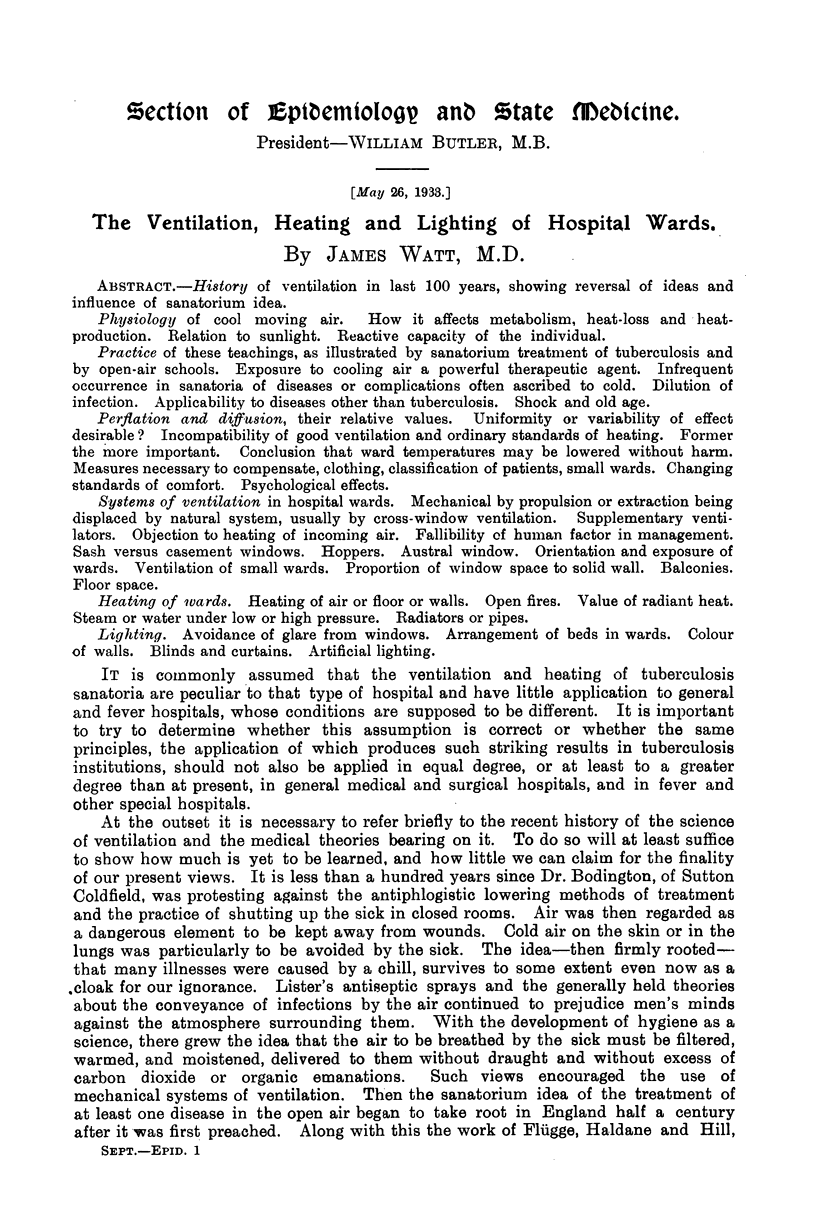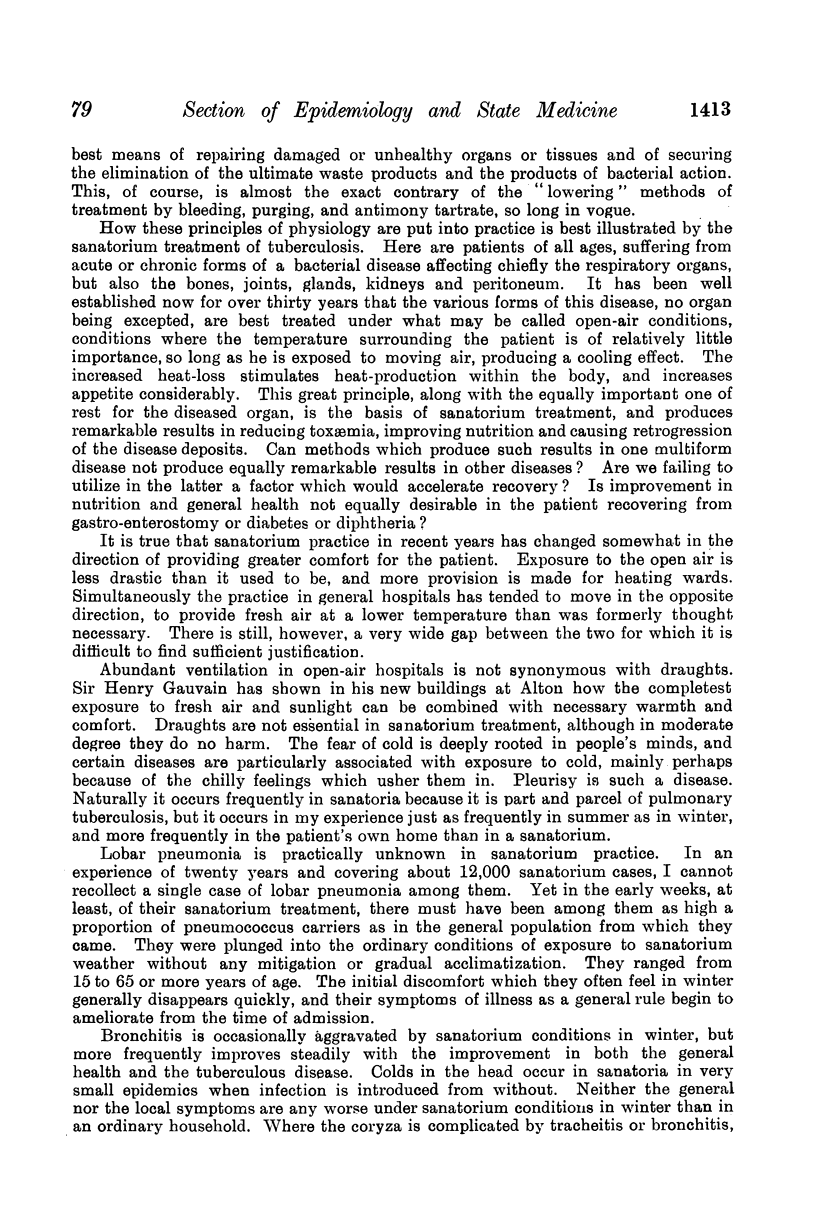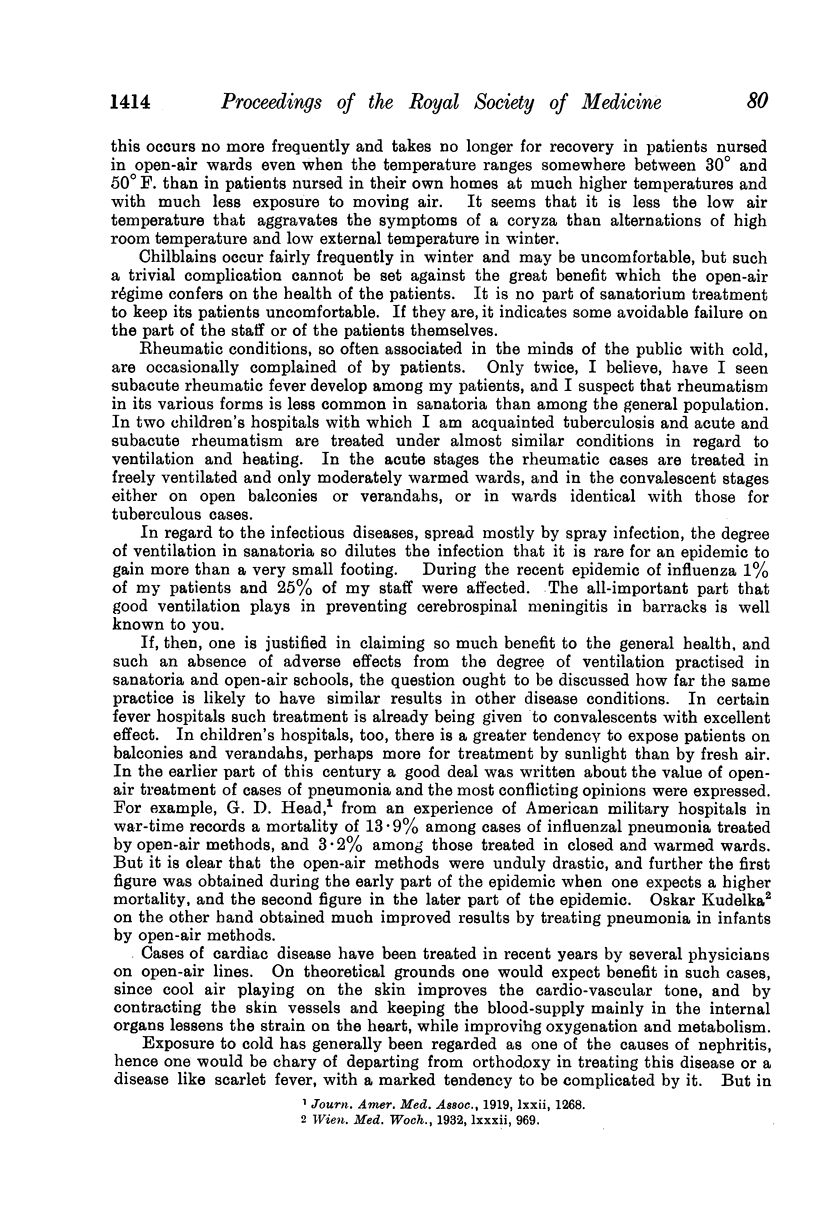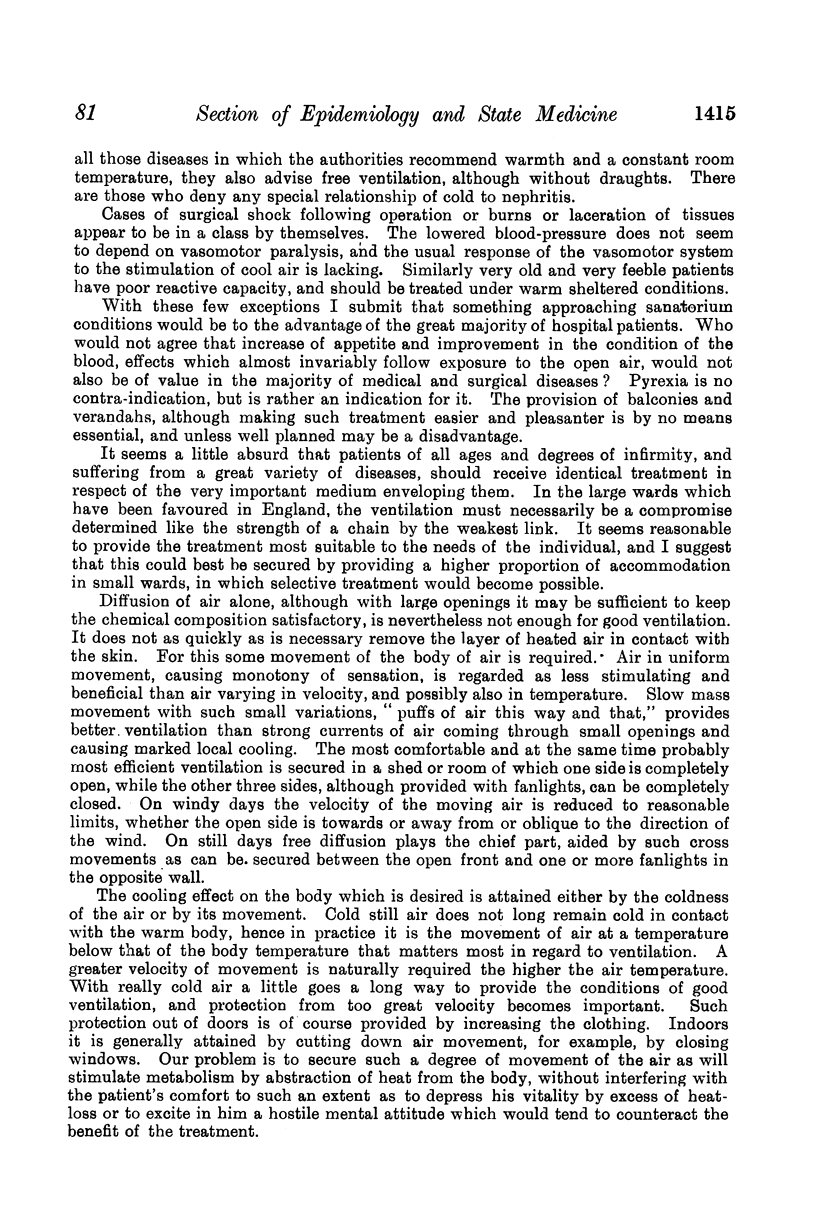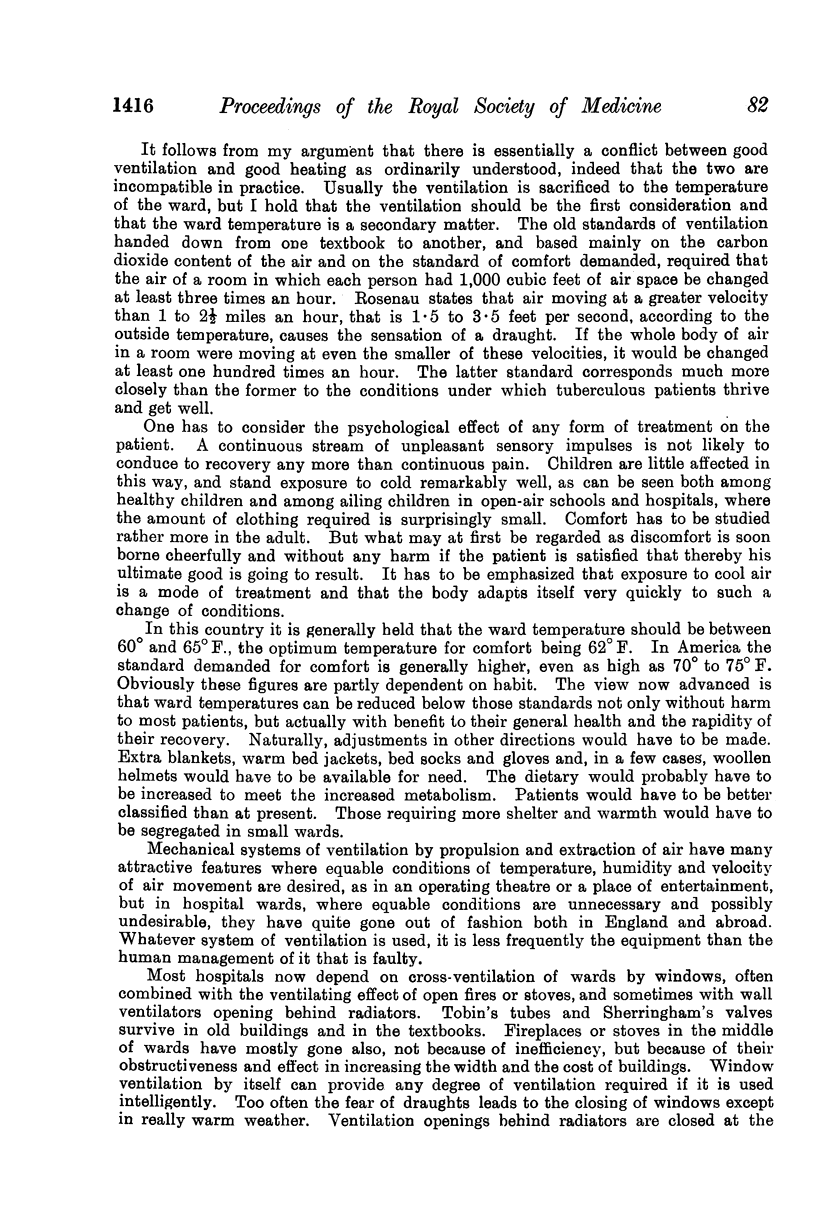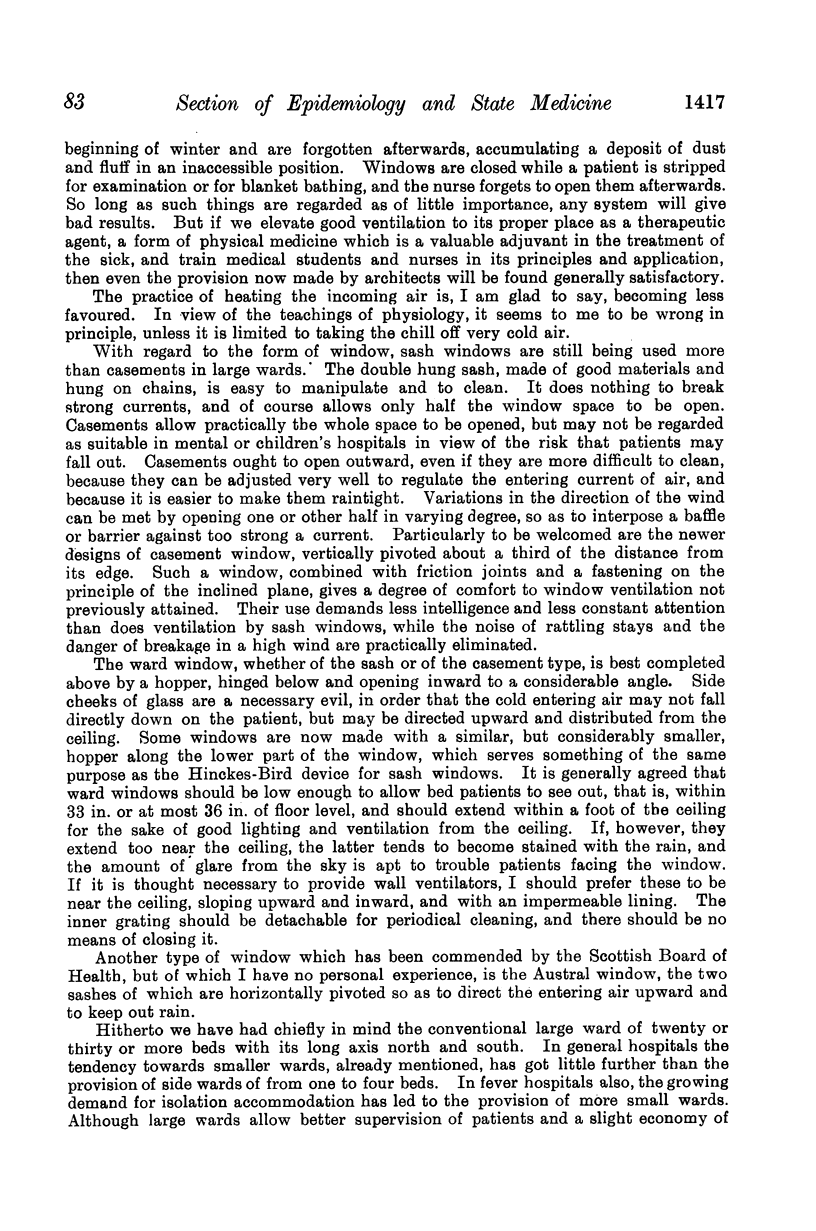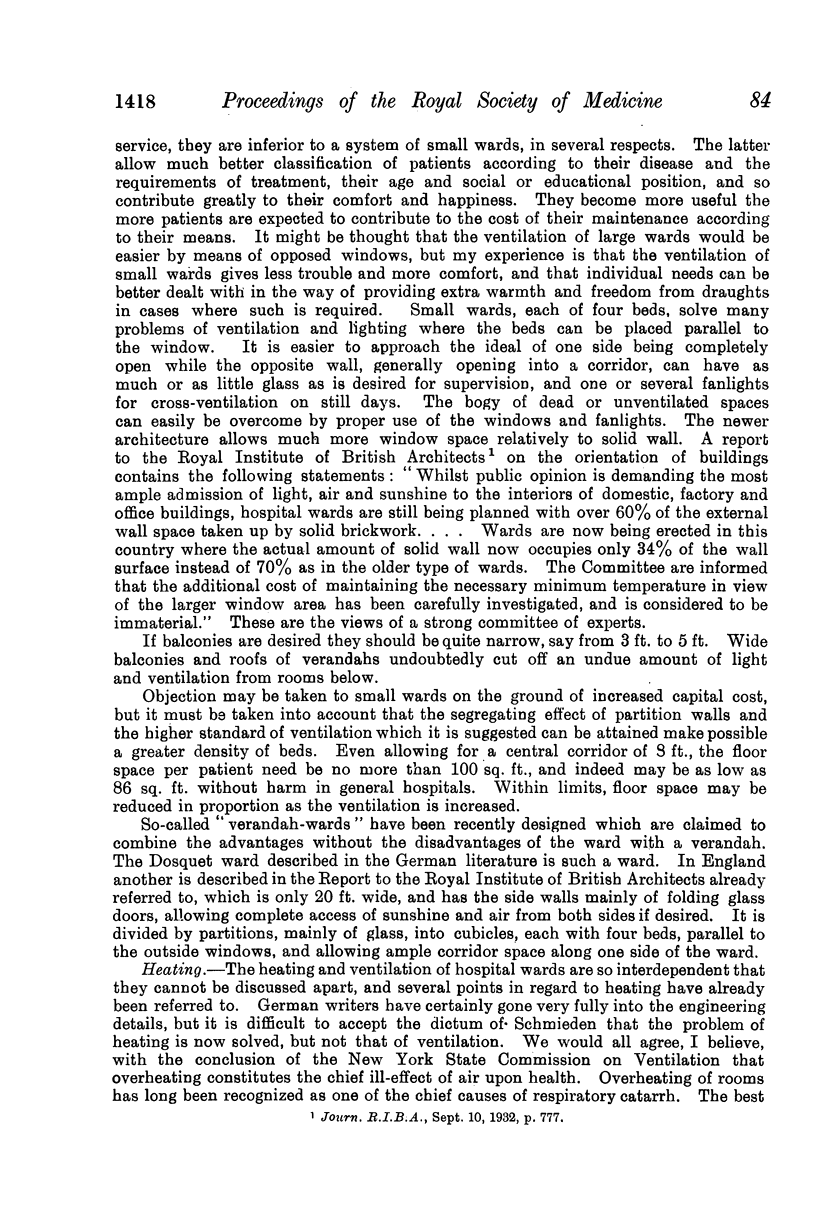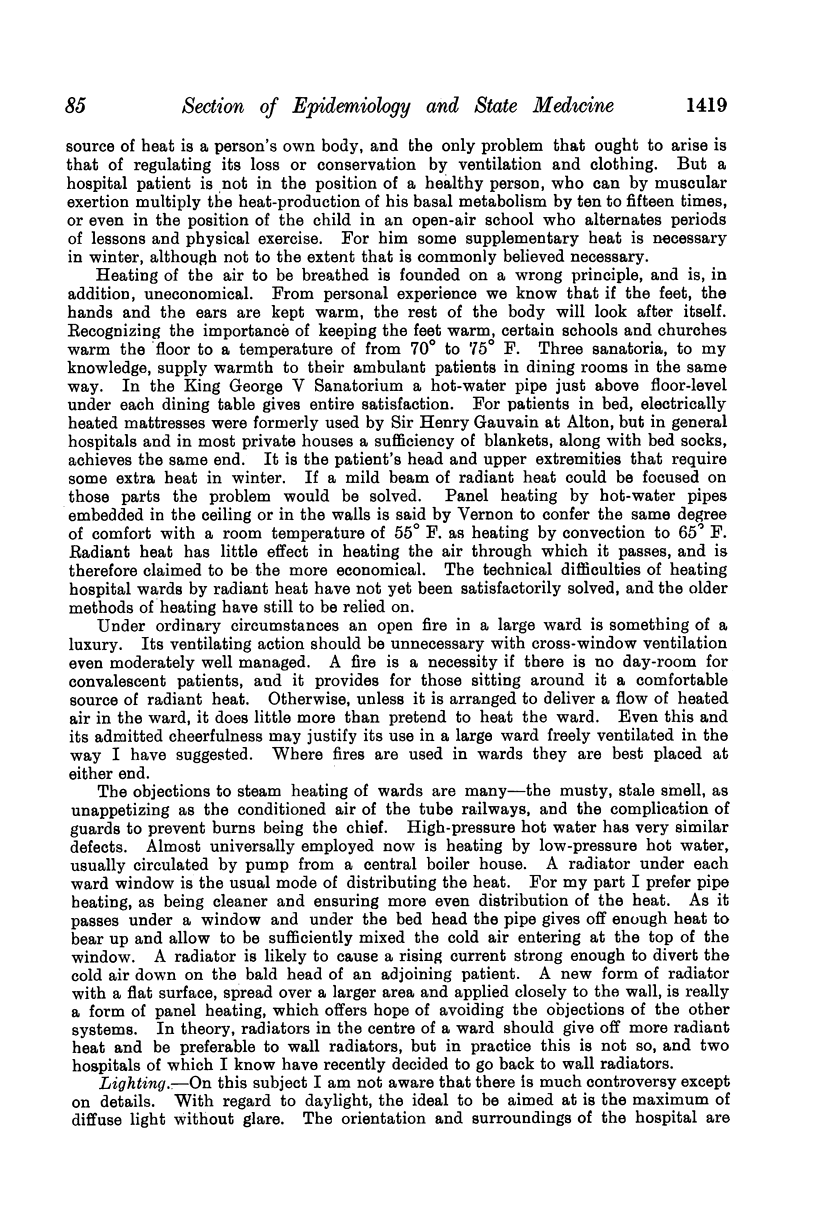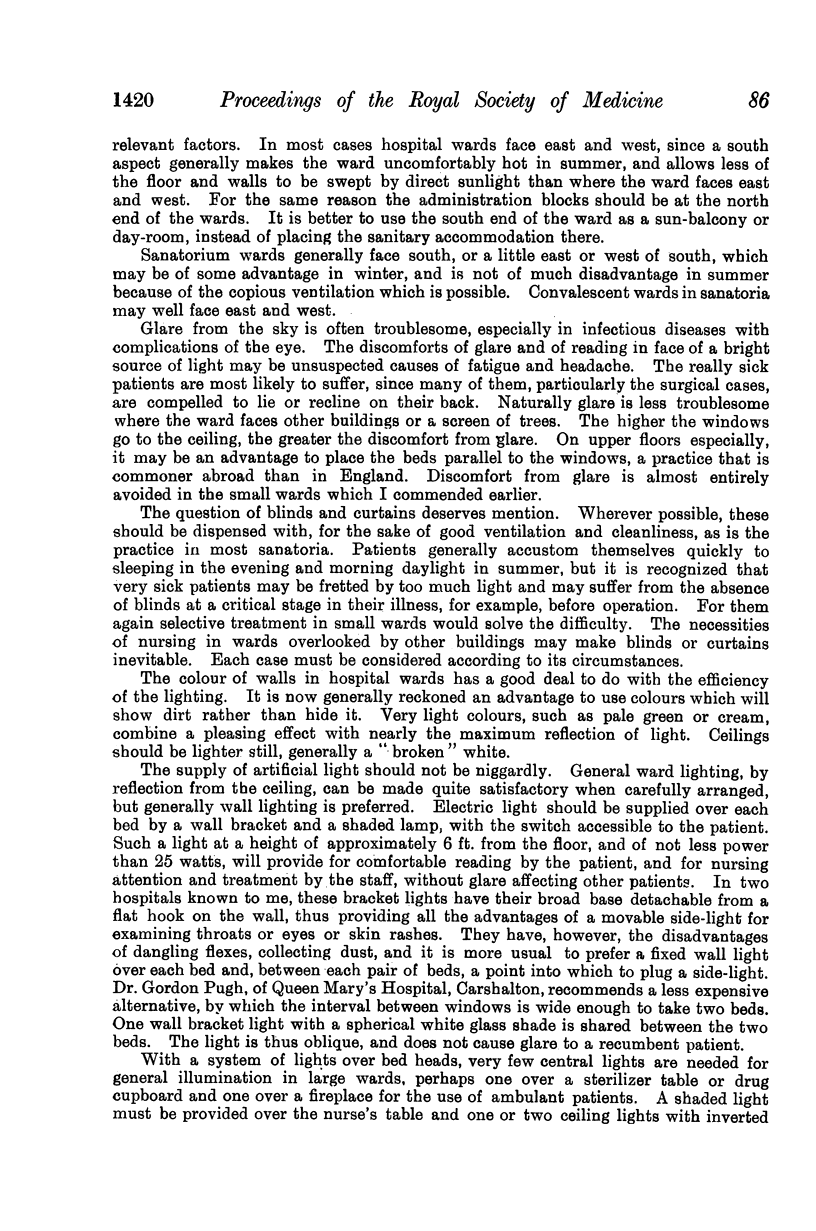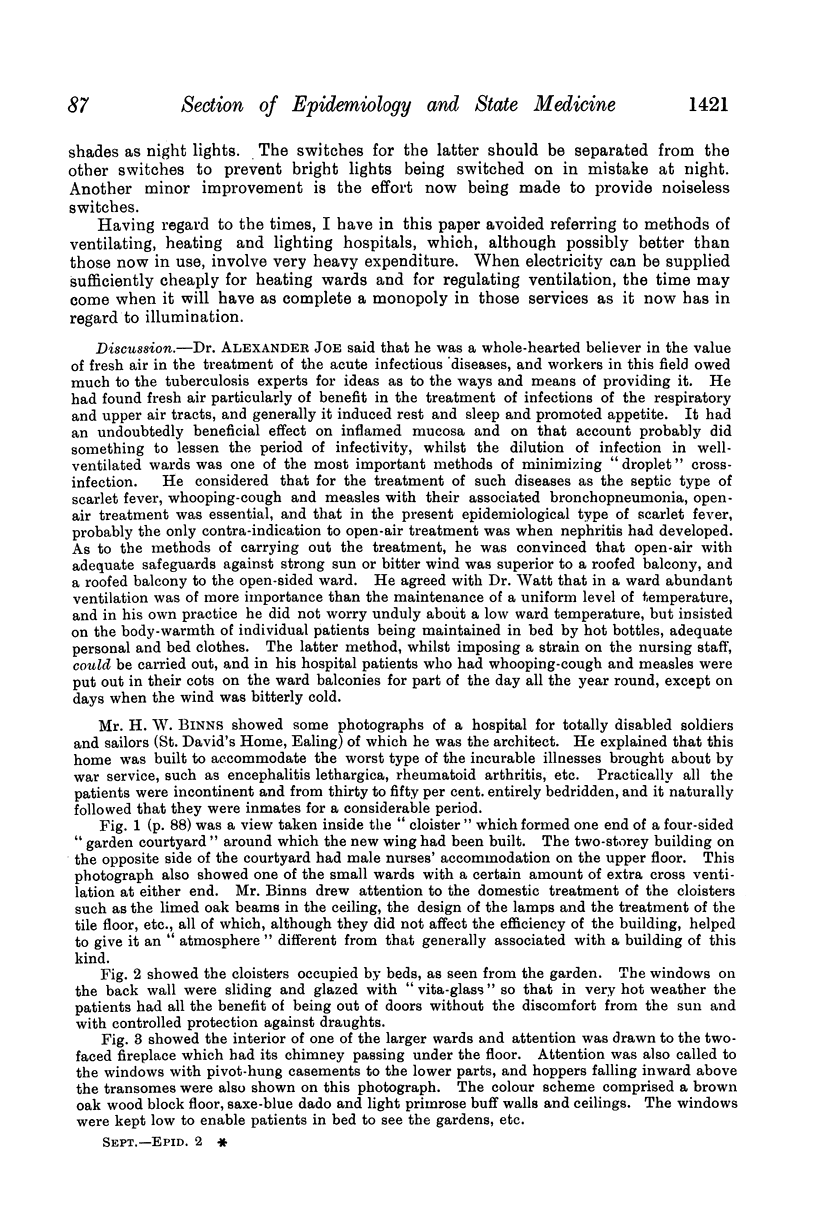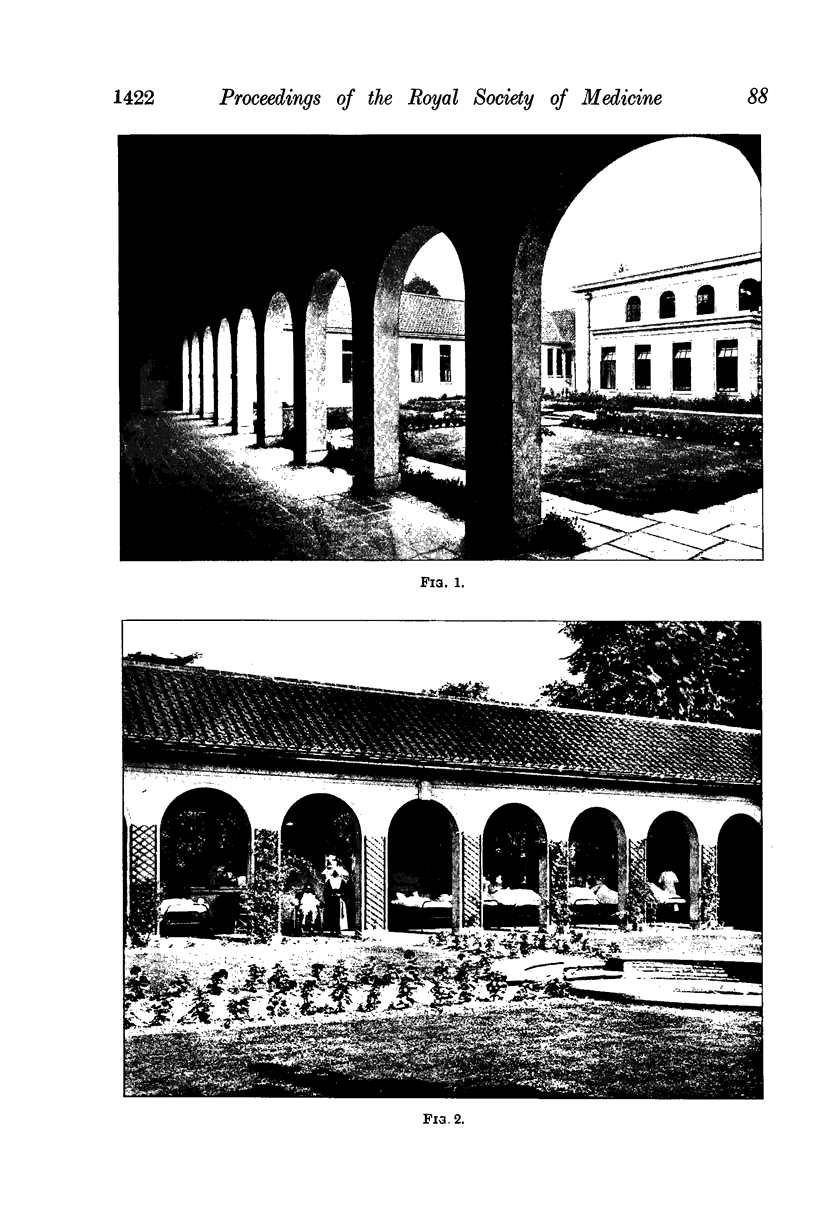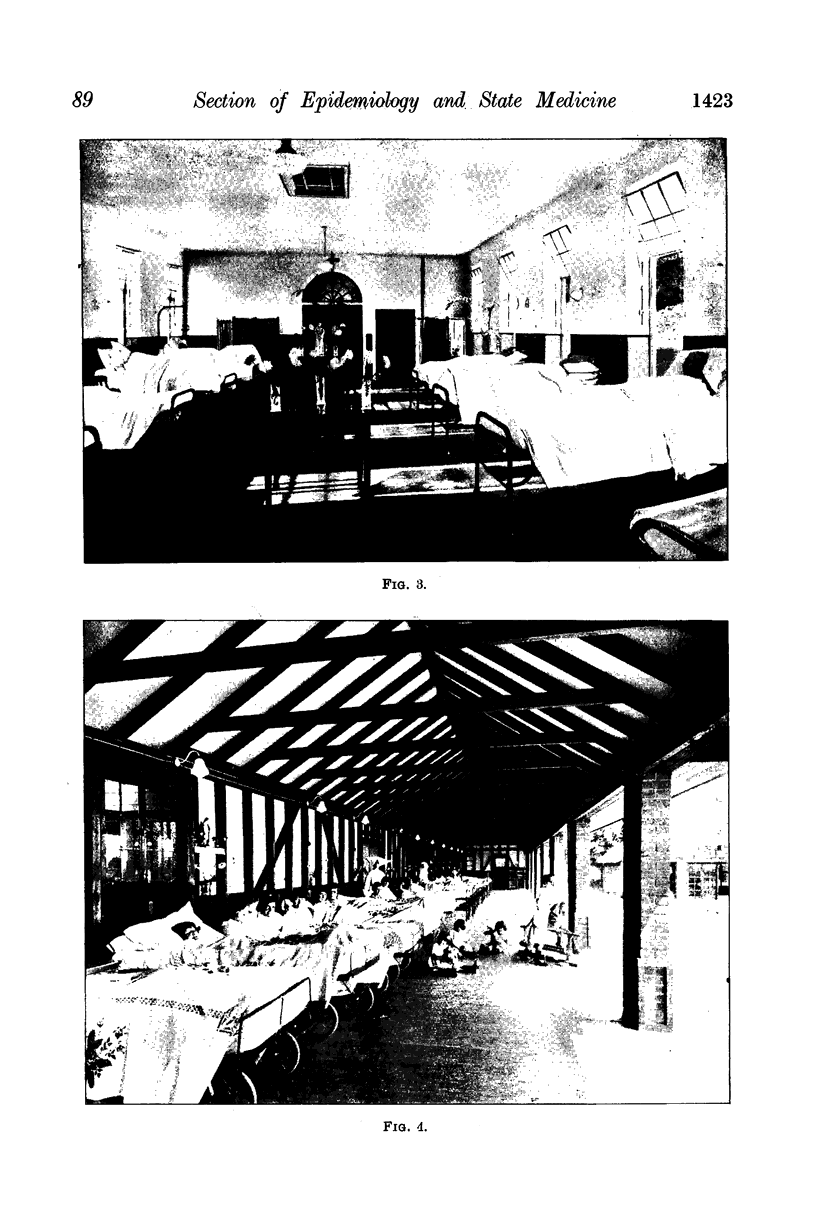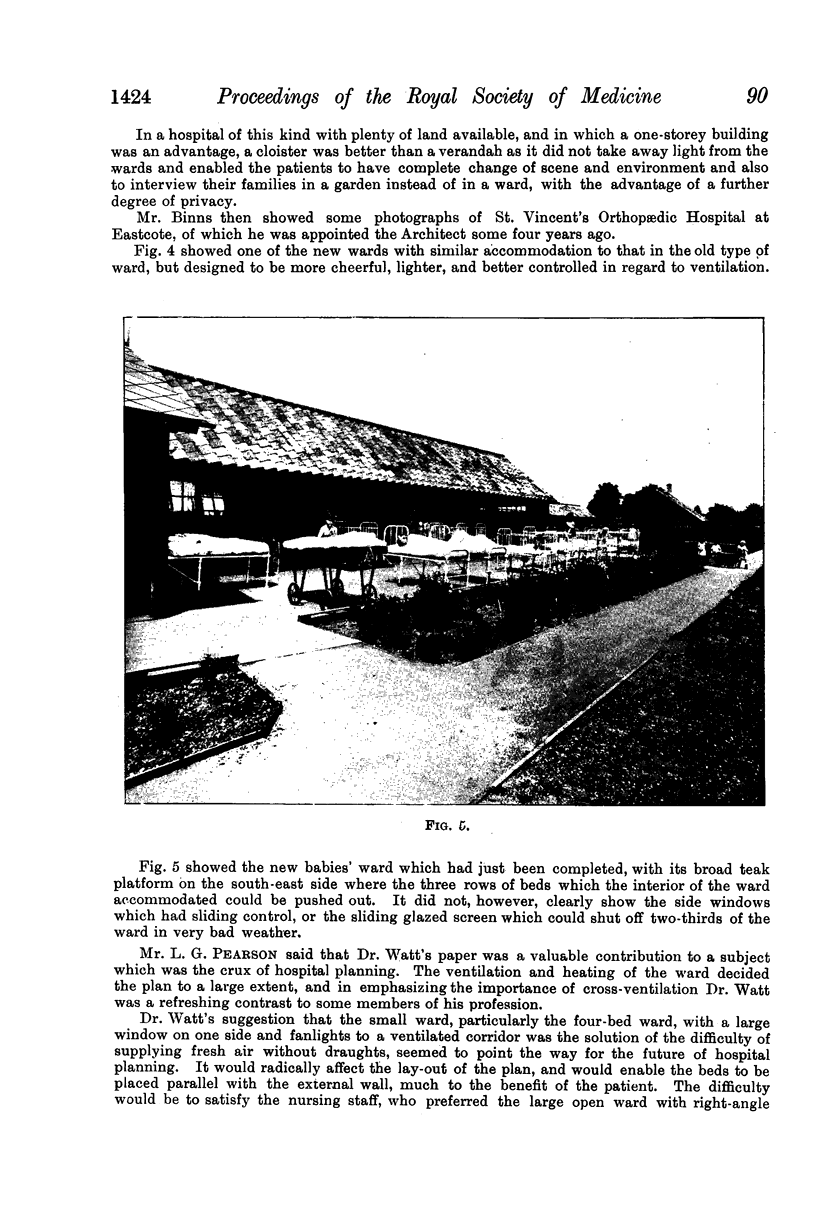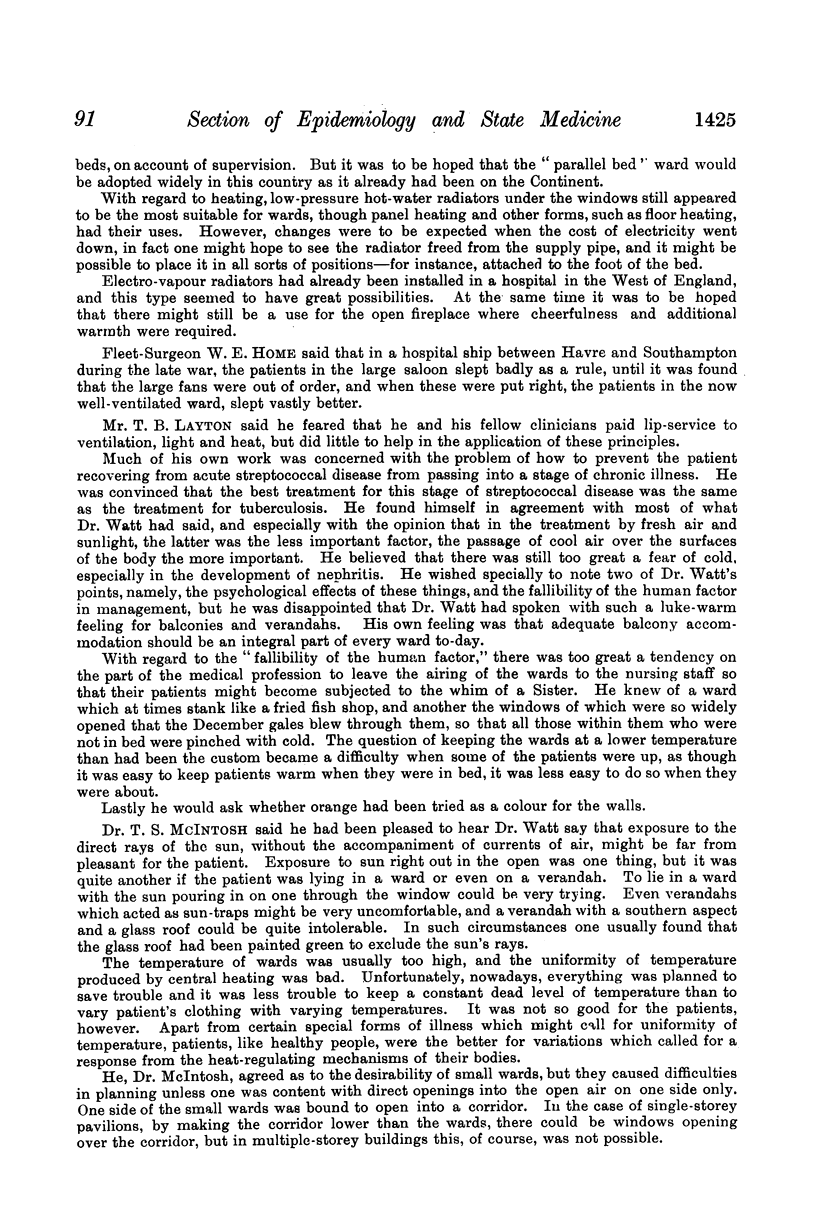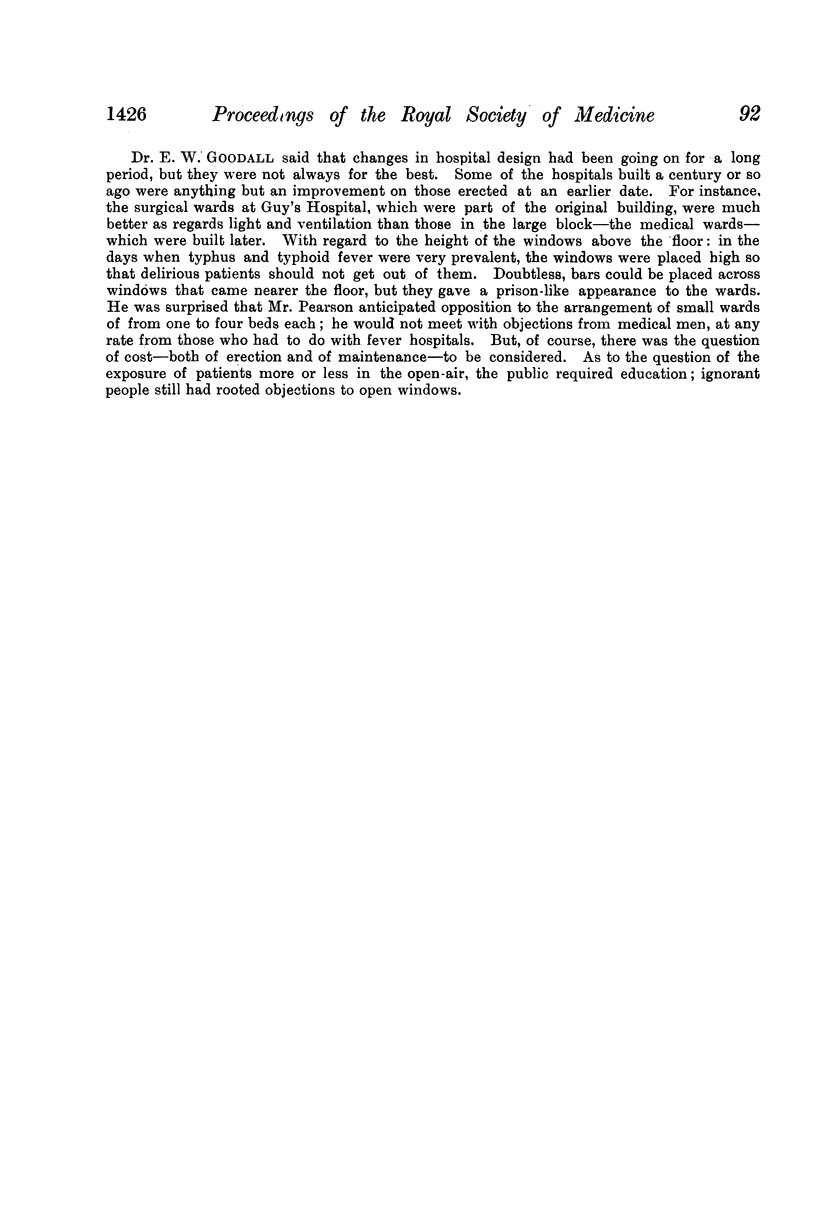Abstract
History of ventilation in last 100 years, showing reversal of ideas and influence of sanatorium idea.
Physiology of cool moving air. How it affects metabolism, heat-loss and heat-production. Relation to sunlight. Reactive capacity of the individual.
Practice of these teachings, as illustrated by sanatorium treatment of tuberculosis and by open-air schools. Exposure to cooling air a powerful therapeutic agent. Infrequent occurrence in sanatoria of diseases or complications often ascribed to cold. Dilution of infection. Applicability to diseases other than tuberculosis. Shock and old age.
Perflation and diffusion, their relative values. Uniformity or variability of effect desirable? Incompatibility of good ventilation and ordinary standards of heating. Former the more important. Conclusion that ward temperatures may be lowered without harm. Measures necessary to compensate, clothing, classification of patients, small wards. Changing standards of comfort. Psychological effects.
Systems of ventilation in hospital wards. Mechanical by propulsion or extraction being displaced by natural system, usually by cross-window ventilation. Supplementary ventilators. Objection to heating of incoming air. Fallibility of human factor in management. Sash versus casement windows. Hoppers. Austral window. Orientation and exposure of wards. Ventilation of small wards. Proportion of window space to solid wall. Balconies. Floor space.
Heating of wards. Heating of air or floor or walls. Open fires. Value of radiant heat. Steam or water under low or high pressure. Radiators or pipes.
Lighting. Avoidance of glare from windows. Arrangement of beds in wards. Colour of walls. Blinds and curtains. Artificial lighting.
Full text
PDF